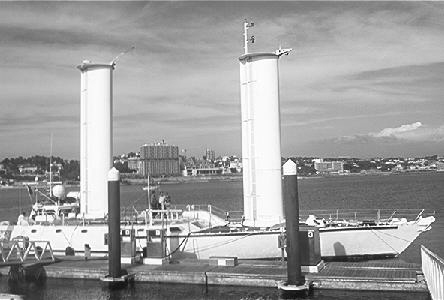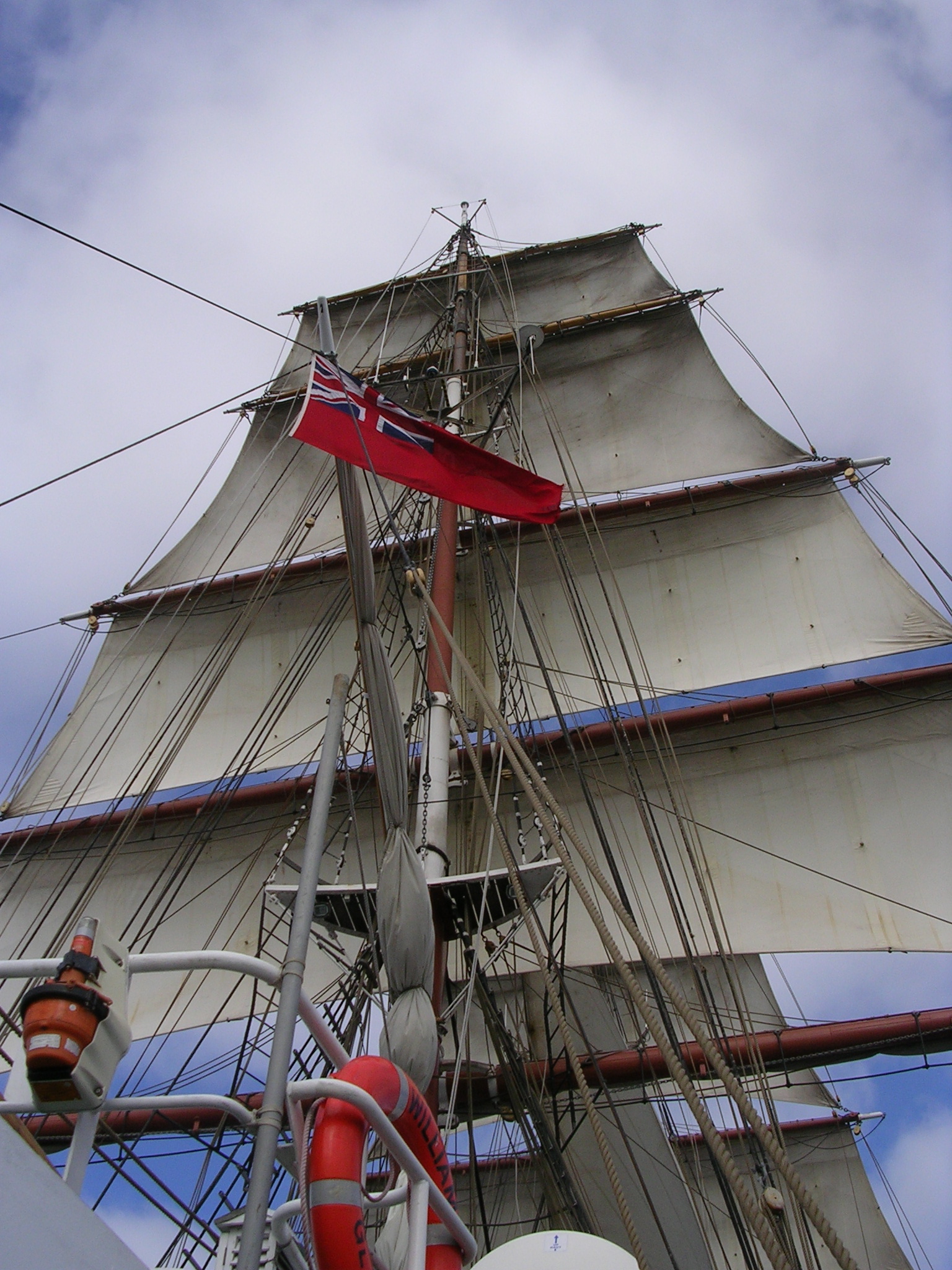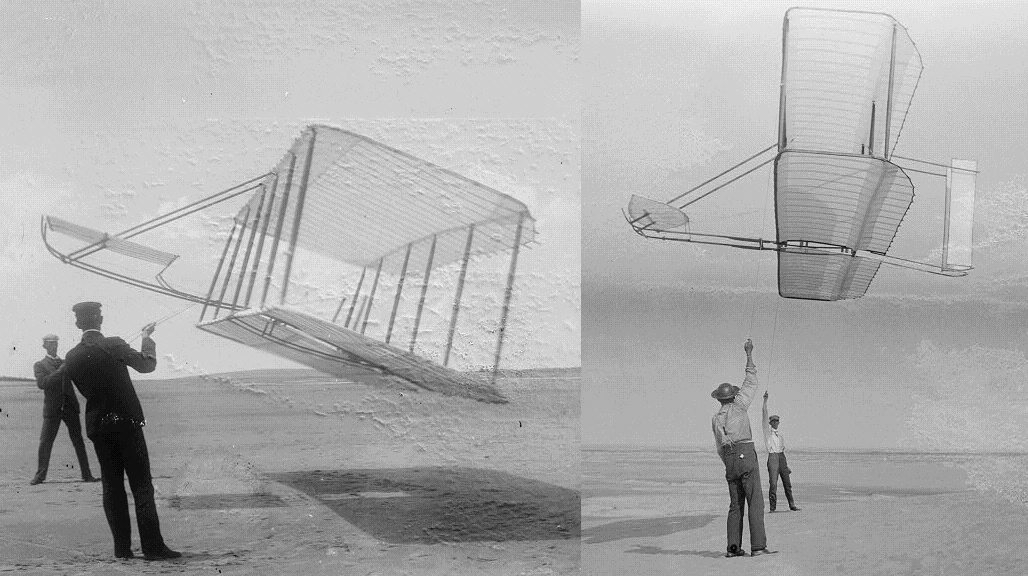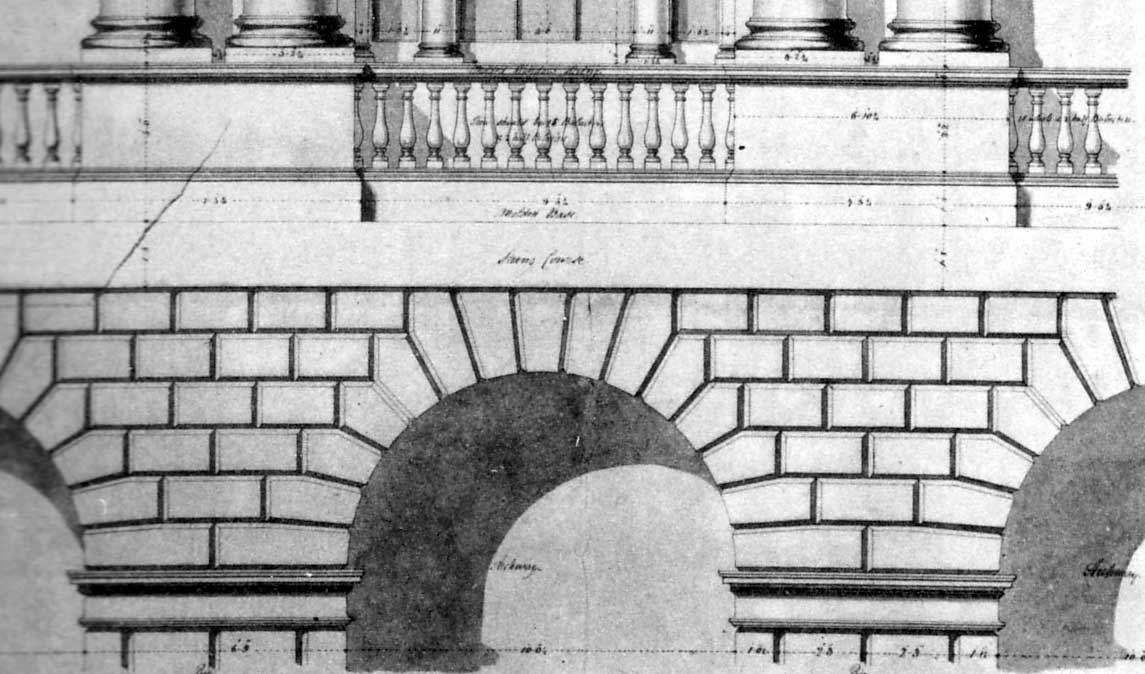|
Turbosail
The turbosail or French is a marine propulsion system using a sail-like vertical surface and a powered boundary layer control system to improve lift across a wide angle of attack. This allows the sail to power the boat in any direction simply by moving a single flap at the back of the sail, unlike conventional sails which have to be continually adjusted to react to changes in the relative wind. The turbosail was first developed in a large scale application by Jacques-Yves Cousteau who commissioned the ''Alcyone'' to test the concept in production. The larger ''Calypso II'' was also designed to use a turbosail, but that design was not built. Technical design Concept In 1980, Jacques Cousteau dreamed of creating a ship with a modern engine that would be powered, at least in part, by the wind, a clean, free, renewable energy source. Aerodynamics Cousteau and his associates, Professor Lucien Malavard and Dr. Bertrand Charrier, used a fixed cylinder that looked like a smokes ... [...More Info...] [...Related Items...] OR: [Wikipedia] [Google] [Baidu] |
Alcyone (1985 Ship)
''Alcyone'' is a ship launched at La Rochelle in 1985 for the Cousteau Society. ''Alcyone'' was created as an expedition ship and to test the operation of a new kind of marine propulsion system, the turbosail. ''Alcyone''s two turbosails augment its diesel engines. Since the accidental sinking of , ''Alcyone'' has been the Cousteau Society's expedition vessel. ''Alcyone'' in popular culture * John Denver Henry John Deutschendorf Jr. (December 31, 1943 – October 12, 1997), known professionally as John Denver, was an American singer-songwriter, guitarist, actor, activist, and humanitarian whose greatest commercial success was as a solo singe ... wrote a short song called "Alcyone The Wind" as a tribute to ''Alcyone''. The song was sung in the 1993 documentary '' Secret Societies of Dolphins and Whales''. References External links Cousteau Society's ship page for the ''Alcyone''* Jean-Charles Nahon (Naval Architect Bureau Mauric) and Bernard Deguy (First captain of ''A ... [...More Info...] [...Related Items...] OR: [Wikipedia] [Google] [Baidu] |
Marine Propulsion
Marine propulsion is the mechanism or system used to generate thrust to move a watercraft through water. While paddles and sails are still used on some smaller boats, most modern ships are propelled by mechanical systems consisting of an electric motor or internal combustion engine driving a propeller, or less frequently, in pump-jets, an impeller. Marine engineering is the discipline concerned with the engineering design process of marine propulsion systems. Human-powered paddles and oars, and later, sails were the first forms of marine propulsion. Rowed galleys, some equipped with sail, played an important early role in early human seafaring and warfares. The first advanced mechanical means of marine propulsion was the marine steam engine, introduced in the early 19th century. During the 20th century it was replaced by two-stroke or four-stroke diesel engines, outboard motors, and gas turbine engines on faster ships. Marine nuclear reactors, which appeared in the ... [...More Info...] [...Related Items...] OR: [Wikipedia] [Google] [Baidu] |
Wing
A wing is a type of fin that produces lift while moving through air or some other fluid. Accordingly, wings have streamlined cross-sections that are subject to aerodynamic forces and act as airfoils. A wing's aerodynamic efficiency is expressed as its lift-to-drag ratio. The lift a wing generates at a given speed and angle of attack can be one to two orders of magnitude greater than the total drag on the wing. A high lift-to-drag ratio requires a significantly smaller thrust to propel the wings through the air at sufficient lift. Lifting structures used in water include various foils, such as hydrofoils. Hydrodynamics is the governing science, rather than aerodynamics. Applications of underwater foils occur in hydroplanes, sailboats and submarines. Etymology and usage For many centuries, the word "wing", from the Old Norse ''vængr'', referred mainly to the foremost limbs of birds (in addition to the architectural aisle). But in recent centuries the word's meanin ... [...More Info...] [...Related Items...] OR: [Wikipedia] [Google] [Baidu] |
Alcyone
In Greek mythology, Alcyone or Halcyone (; grc, Ἀλκυόνη, Alkyónē derived from grc, ἀλκυών, alkyṓn, kingfisher, label=none) and Ceyx (; grc, Κήϋξ, Kḗÿx) were a wife and husband who incurred the wrath of the god Zeus. Mythology Alcyone was a Thessalian princess, the daughter of King Aeolus of Aeolia, either by Enarete or Aegiale. She was the sister of Salmoneus, Athamas, Sisyphus, Cretheus, Perieres, Deioneus, Magnes, Calyce, Canace, Pisidice and Perimede. Later on, Alcyone became the queen of Trachis after marrying King Ceyx. The latter was the son of Eosphorus (often translated as Lucifer). The couple were very happy together in Trachis. According to Pseudo-Apollodorus's account, this couple often sacrilegiously called each other "Zeus" and "Hera". This angered Zeus, so while Ceyx was at sea (in order to consult an oracle, according to Ovid), he killed Ceyx with a thunderbolt. Soon after, Morpheus, the god of dreams, disguised ... [...More Info...] [...Related Items...] OR: [Wikipedia] [Google] [Baidu] |
America's Cup
The America's Cup, informally known as the Auld Mug, is a trophy awarded in the sport of sailing. It is the oldest international competition still operating in any sport. America's Cup match races are held between two sailing yachts: one from the yacht club that currently holds the trophy (known as the defender) and the other from the yacht club that is challenging for the cup (the challenger). Matches are held several years apart on dates agreed between the defender and the challenger. There is no fixed schedule, but the races have generally been held every three to four years. The most recent America's Cup match took place in March 2021. The cup was originally known as the 'R.Y.S. £100 Cup', awarded in 1851 by the British Royal Yacht Squadron for a race around the Isle of Wight in the United Kingdom. The winning yacht was a schooner called '' America'', owned by a syndicate of members from the New York Yacht Club (NYYC). In 1857, the syndicate permanently donated th ... [...More Info...] [...Related Items...] OR: [Wikipedia] [Google] [Baidu] |
Square Sail
Square rig is a generic type of sail and rigging arrangement in which the primary driving sails are carried on horizontal spars which are perpendicular, or square, to the keel of the vessel and to the masts. These spars are called ''yards'' and their tips, outside the lifts, are called the ''yardarms.'' A ship mainly rigged so is called a square-rigger. The square rig is aerodynamically the most efficient running rig (i.e., sailing downwind), and stayed popular on ocean-going sailing ships until the end of the Age of Sail. The last commercial sailing ships, windjammers, were usually square-rigged four-masted barques. History The oldest archaeological evidence of use of a square-rig on a vessel is an image on a clay disk from Mesopotamia from 5000 BC. Single sail square rigs were used by the ancient Egyptians, the Phoenicians, the Greeks, the Romans, and the Celts. Later the Scandinavians, the Germanic peoples, and the Slavs adopted the single square-rigged sail, with it be ... [...More Info...] [...Related Items...] OR: [Wikipedia] [Google] [Baidu] |
Flap (aircraft)
A flap is a high-lift device used to reduce the stalling speed of an aircraft wing at a given weight. Flaps are usually mounted on the wing trailing edges of a fixed-wing aircraft. Flaps are used to reduce the take-off distance and the landing distance. Flaps also cause an increase in drag so they are retracted when not needed. The flaps installed on most aircraft are partial-span flaps; spanwise from near the wing root to the inboard end of the ailerons. When partial-span flaps are extended they alter the spanwise lift distribution on the wing by causing the inboard half of the wing to supply an increased proportion of the lift, and the outboard half to supply a reduced proportion of the lift. Reducing the proportion of the lift supplied by the outboard half of the wing is accompanied by a reduction in the angle of attack on the outboard half. This is beneficial because it increases the margin above the stall of the outboard half, maintaining aileron effectiveness and reduc ... [...More Info...] [...Related Items...] OR: [Wikipedia] [Google] [Baidu] |
Boundary Layer Control
Boundary layer control refers to methods of controlling the behaviour of fluid flow boundary layers. It may be desirable to reduce flow separation on fast vehicles to reduce the size of the wake (streamlining), which may reduce drag. Boundary layer separation is generally undesirable in aircraft high lift coefficient systems and jet engine intakes. Laminar flow produces less skin friction than turbulent but a turbulent boundary layer transfers heat better. Turbulent boundary layers are more resistant to separation. The energy in a boundary layer may need to be increased to keep it attached to its surface. Fresh air can be introduced through slots or mixed in from above. The low momentum layer at the surface can be sucked away through a perforated surface or bled away when it is in a high pressure duct. It can be scooped off completely by a diverter or internal bleed ducting. Its energy can be increased above that of the free stream by introducing high velocity air. Nature Fran ... [...More Info...] [...Related Items...] OR: [Wikipedia] [Google] [Baidu] |
Angle Of Attack
In fluid dynamics, angle of attack (AOA, α, or \alpha) is the angle between a reference line on a body (often the chord line of an airfoil) and the vector representing the relative motion between the body and the fluid through which it is moving. Angle of attack is the angle between the body's reference line and the oncoming flow. This article focuses on the most common application, the angle of attack of a wing or airfoil moving through air. In aerodynamics, angle of attack specifies the angle between the chord line of the wing of a fixed-wing aircraft and the vector representing the relative motion between the aircraft and the atmosphere. Since a wing can have twist, a chord line of the whole wing may not be definable, so an alternate reference line is simply defined. Often, the chord line of the root of the wing is chosen as the reference line. Another choice is to use a horizontal line on the fuselage as the reference line (and also as the longitudinal axis). Some a ... [...More Info...] [...Related Items...] OR: [Wikipedia] [Google] [Baidu] |
Extrados
A voussoir () is a wedge-shaped element, typically a stone, which is used in building an arch or vault. Although each unit in an arch or vault is a voussoir, two units are of distinct functional importance: the keystone and the springer. The keystone is the centre stone or masonry unit at the apex of an arch. The springer is the lowest voussoir on each side, located where the curve of the arch springs from the vertical support or abutment of the wall or pier. The keystone is often decorated or enlarged. An enlarged and sometimes slightly dropped keystone is often found in Mannerist arches of the 16th century, beginning with the works of Giulio Romano, who also began the fashion for using voussoirs above rectangular openings, rather than a lintel (Palazzo Stati Maccarani, Rome, circa 1522). The word is a stonemason's term borrowed in Middle English from French verbs connoting a "turn" (''OED''). Each wedge-shaped voussoir ''turns aside'' the thrust of the mass above, trans ... [...More Info...] [...Related Items...] OR: [Wikipedia] [Google] [Baidu] |


.jpg)




